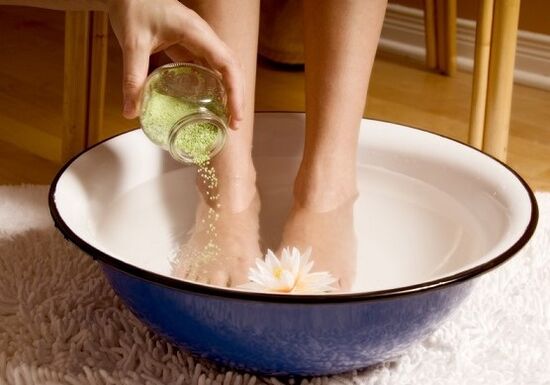Fungal injuries of skin and nail plates are the most common dermatological disease, according to statistics from the World Health Association. They cause a lot of inconvenience to a person, violate their household life, and violate the usual biorhythm. Mushroom treatment is long and expensive. Therefore, the earlier diagnostics is made, the faster the treatment can start, preventing complications.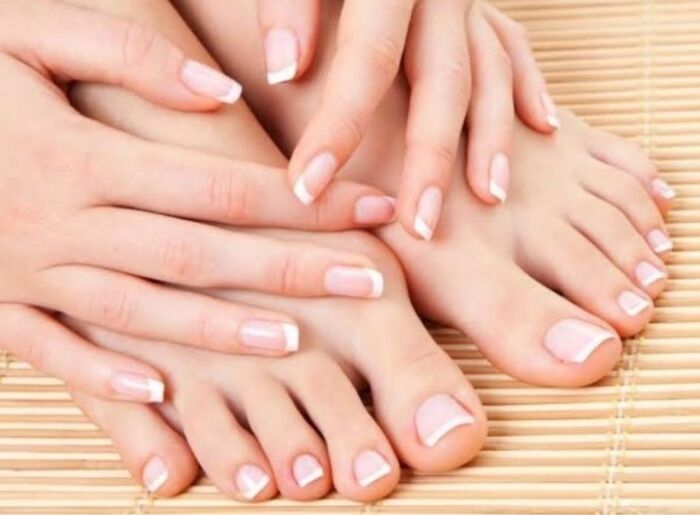
What is the fungus on the legs?
The skin of the feet and nails is a fungus is an infectious disease that affects the upper layer of the epidermis of the legs and the toes of the toes. Onychomycosis (the medical name of the pathology) occurs due to skin injuries such as mold, yeast, candida -type fungi, dermatomycetes, dermatophytes. Data groups of microorganisms are able to live and reproduce on the human body, gradually influencing healthy cells. The fungus is most often found in men because of microflora, which are more suitable for fungal infections.
There are about 50 different mushrooms in a medical classification. Fungal lesions are approx. 85% is caused by dermatomyces. The type of Candida fungi is the cause of the disease, with approx. 10-12%. The remaining small percentage of mycotic mold is microorganisms, which are actively multiplied by inappropriate with personal hygiene rules.
The intensity of fungal diseases and the degree of progression depend on many factors: a climate that promotes reproduction of this type of bacteria; Social circumstances of the human residence; age criterion; individual characteristics of the body; immunity. Most often, people are confronted with a fungus after 50 years because their level pH is much weaker and is unable to suppress this type of microorganisms.
Causes of mushroom formation on the legs
The intrusion of mycotic organizations into the skin leads to fungal infection. Due to the presence of proteolytic enzymes, fungi easily penetrate the surface tissues of the epidermis and the protein structure allows them to actively develop and keep them in place.
The body's immune system is able to suppress the pathogenic environment on its own, but sometimes it is not enough. On the surface of the skin, include special bacteria that support the balance of the acid base. The alkaline environment is unfavorable for fungal infections, so the mycelium that falls on healthy skin will die after a while. But many factors allow fungi to get used to the skin:
- mechanical damage to the skin (cuts, scratches, burns);
- Aggressive exposure to household chemicals, reducing the acid-base balance of the skin (frequent entry of the shower with shampoos or gels, deodorant of legs, longer water contact);
- wearing long -term synthetic materials, causing active sweating (synthetic socks, shoes barefoot);
- Hyperhidrosis - increased sweating associated with the unique characteristics of the body;
- The anatomical properties of the football, such as the narrow gaps between the flat legs or the fingers (in these areas, the quality of hygiene is worsened), which contributes to the poor breathing of the legs;
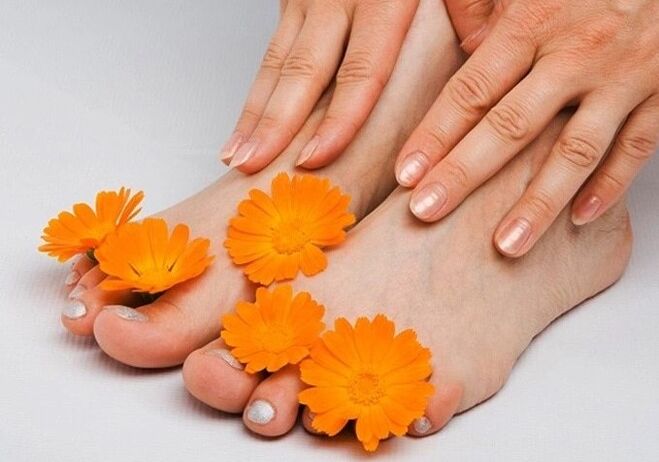
- Too rapidly growth, growing nails in the skin;
- varicose diseases;
- Climate characteristics of the region (a temperate or cold climate in which to wear continuously closed heating shoes);
- age-related immune and hormonal changes;
- the presence of pathologies affecting the state of the immune system (diabetes, HIV infection, obesity, dystrophy);
- taking antibiotics, cytostatic agents, contraceptives;
- Frequent use of antiseptic agents (gels, napkins, special solutions for skin processing).
The mushroom penetration into the nail plates of the toes is done as follows:
- The fungus penetrates from the free edge of the nail (which is cut). Thus, the development of the disease begins under the nails itself, gradually deforming the free live and deeply spread to healthy areas. This form of fungus is the simplest and easy to eliminate.
- Dorsal tools (from the cuticle). This method of damage to nail plates is less common. It is only typical of dermatomicetov. The rear defeat includes quick destruction of the nail plate as quickly as possible.
- With damage to the proximal cylinder. This is the rarest and most severe shape of the nail fungus. The disease itself leads to destroying the phalanx structure of the nail. If you do not start treatment on time, you can lose your nails forever as it will not be able to grow again. The use of ointments, gels and liquids in this form of fungus is completely ineffective.
In a large risk group, there are people who often visit public places: sports clubs, public showers, pools, beaches with water bodies, saunas or baths. In addition, people who already get worn shoes and clothes or make friends or acquaintances are very dangerous.
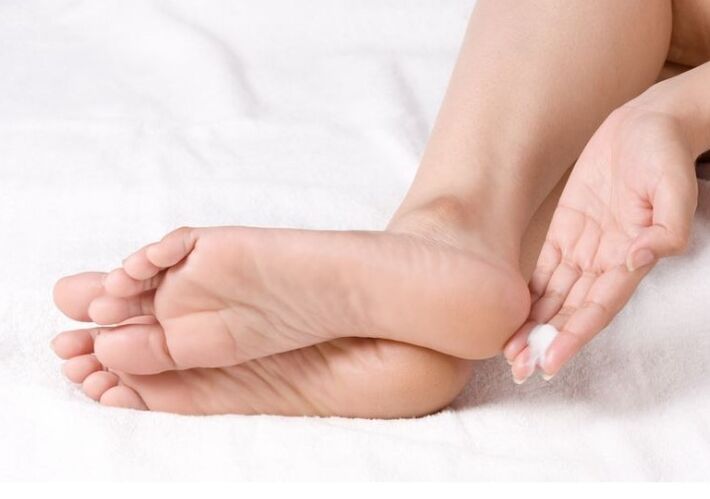
The legs of the legs and the nails of the legs
Symptoms and the course of the disease depend primarily on the type of microorganisms provoking the disease. Another factor in the older than the older person is the more pronounced the symptoms and the skin and nail damage will be significantly accelerated.
Despite the individual course of the disease, the type of bacteria and the characteristics of the body, there are general symptoms to recognize the fungal infection:
- Tissue compression occurs in the presence of the fungus on the skin of the legs, especially on the fingers wall. As a general rule, the skin shines, dries, and begins to peel. Peeling is accompanied by an unpleasant itching. The inflammation of the nearby cylinder is damaged by the lesion of the nail plates. The fungus affecting the skin of the nail cylinder is accompanied by an inflammatory procedure. When pressed on the skin, one feels pain and causes discomfort when wearing closed shoes.
- When it comes to the nails themselves, the symptoms gradually occur. First you notice the small changes in the color of the nail, becomes muddy and covered with white fog. If the cause of the fungus has become dermatomycetes, it will be divided. In addition, the color of the nail plates occurs and becomes more yellow after they start to compact. After the seal, the nail deformation occurs, the nail walls rotate, and the nail gradually begins to color.
In the process of developing the disease, one feels a little pain and itching, longing for a nail. In addition, the skin fungus is a characteristic unpleasant sour scent, which is very tangible in a narrow, closed space.
Treatment of skin fungus and legs
Treatment of skin and nail plates is significantly different. Therefore, the presence of both types of fungi involves complex therapy. Ointments, gels or creams are most often used to treat skin fungus:
- Sulfur ointment. It destroys the protein membranes of the fungi, preventing their reproduction. The ointment perfectly relieves itching and eliminates inflammation.
- Zinc ointment. It is often used in the skin fungus treatment complex, accelerating the healing process of wounds.
- Salicylic ointment. This tool is effective for all types of skin fungus. The treatment is only 2 weeks.
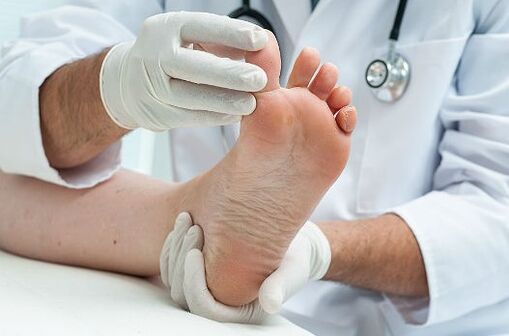
Use medicines to treat more severe forms of fungal infections caused by Mycetic mold. The essence of treatment is based on two principles:
- Destroy the fungus in the stage of active development.
- Stop growth of pathogenic microflora.
Before starting treatment, you should go through all the necessary medical examinations and determine the type of microorganisms caused by fungus. Only these data will be able to treat the doctor effectively.
Prevention and treatment of fungus on the legs with folk drugs
As mentioned above, a fungus is formed on the feet of the legs and the feet nail in the ph5. 5 is related to the fall of the natural level of alkaline balance. The alkaline balance prevents pathogenic microflora development. Therefore, treatment of fungus with folk drugs is exactly aimed at increasing the acid-base balance of the skin. Effective home methods for home struggle fungus can be attributed to:
- Alkaline bath. Dissolve in three liters of warm water with a tablespoon of usual stone salt (even better iodine) and rogue soda. Dip this solution of the foot, cleaned the skin earlier and hold it for 15 minutes.
- Bath vinegar and iodine. Add a pool with warm water, half glass of table vinegar and 10 drops of iodine. Lower your leg for 15 minutes. In the absence of time, you can simply moisten the two cotton tampons in vinegar and wipe all legs with the nails. If the skin has a fungal infection, they should be applied with iodine to prevent the fungus from spreading.
- Lemon juice. Press the juice of one lemon and add a pinch of salt. Moisten one cotton tampon in the juice and treat all affected areas of the skin and nails. Repeat the procedure three times a day.
Such procedures are used to prevent excellent fungus for those who lead an active lifestyle, visit sports complexes and pools. For preventive purposes, a procedure is sufficient per week. The therapy is performed daily for a week to treat simple forms of fungal infection. Even if these methods do not help to eliminate the fungus, they will be able to slow down the development of pathogenic microorganisms when visiting the dermatologist.
